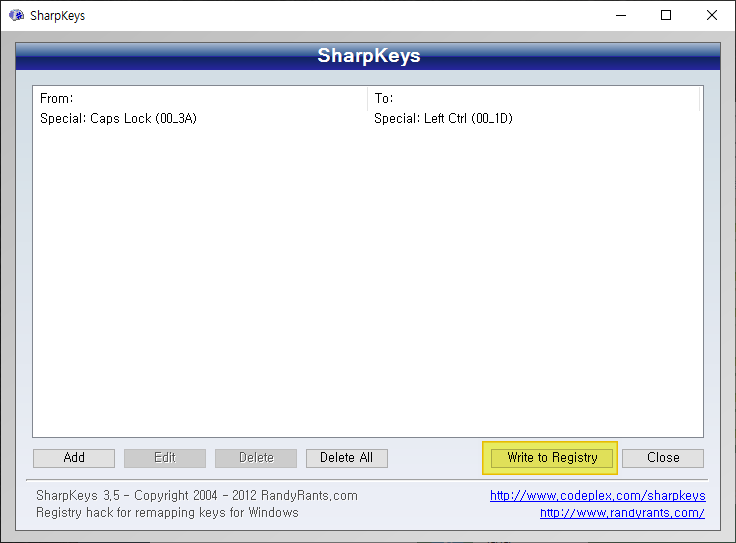
Just go back to SharpKeys again to delete or change key re-maps. Now those pesky keys you don’t need will no longer trouble you.

Step 7: Reboot or log off for the changes to take effect. Step 6: Once you’ve added all the keys you want to re-map or turn off, click Write To Registry. To can re-map multiple keys, start again at Step 1. If you want the key to do nothing, choose Turn Key Off (first choice in the list). You can change it to a more convenient key - for example, when using the IdeaPad U400 I changed the pesky Home key to Backspace just in case I miss the real Backspace key. This is where you’ll choose what the key does going forward. Step 4: In the right column is the same list of keys. You can also click the Type Key button underneath to quickly add the key in question.
#Sharpkeys delete k ey full
The left column shows a full list of keys on your computer. Step 2: Make a backup of your registry just in case. Step 1: Download SharpKeys 3.5, compatible with Windows 7 on down to Windows 2000, and install.
#Sharpkeys delete k ey how to
Here’s how to turn off or change any key’s behavior: There’s a program for Windows that will do it for you no matter what kind of PC you have. For example, if you accidentally hit Caps Lock often, you could use this utility to map Caps Lock to a Shift key or even turn it off completely. You don’t need to manually edit the registry or have a lot of technical expertise to do this. SharpKeys is a Registry hack that is used to make certain keys on a keyboard act like other keys. Windows has had a keyboard remapping functionality for some time, but it requires manipulation of REGBINARY values, which even I as a developer am not too fond of. But we can also go deeper and remap any useless key to function as context menu key. Map up to 104 different keys to other key or disable them altogether Use your keyboard to select keys to map or select from an exhaustive list of supported. The solution to this problem is simple: re-map troublesome keys so they act like different ones or turn them off all together. The simpler method is to just use Shift+F10 instead, as Tim Dunn explains.

Do you often find yourself accidentally hitting the wrong keys on your laptop because of poor design or just messy typing?


 0 kommentar(er)
0 kommentar(er)
